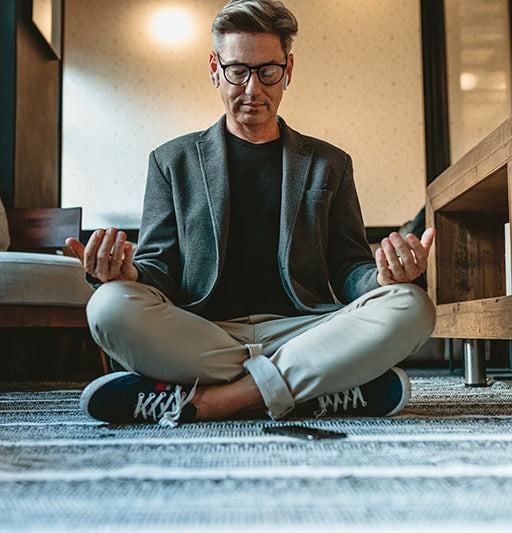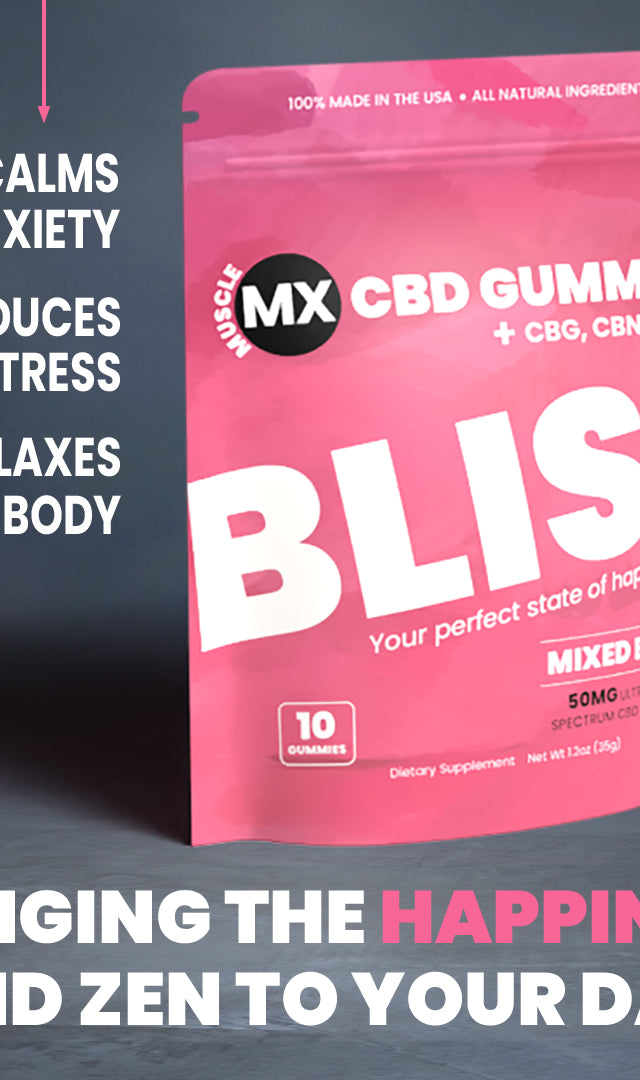How to Live in the Moment: A Simple Guide for Overthinkers (That Actually Works)
Key Takeaways
These practical strategies help overthinkers break free from mental chatter and embrace the present moment for better mental health and life satisfaction.
- Use your breath as an anchor and try the 5-4-3-2-1 grounding technique to immediately pull yourself back to the present
- Limit screen time and practice mindful movement like walking or yoga to naturally reduce overthinking patterns
- When anxious, recognize feelings without judgment and create safe spaces using sensory grounding techniques
- Build daily presence through morning rituals, midday check-ins, and evening reflections to make mindfulness a lifestyle
- Start small with just one technique—even 5 minutes of daily meditation can significantly reduce mental distress
Remember that noticing when your mind wanders is progress, not failure. Each moment you redirect attention to the present strengthens your ability to live fully in the now, where life's greatest joys and connections actually occur.
Introduction
Here's something that might surprise you: only 9% of what we worry about actually happens.
Yet most of us spend valuable mental energy fixated on past regrets or future anxieties instead of experiencing life as it unfolds right now. This constant overthinking disconnects us from the present moment, creating a mental barrier between ourselves and our actual experiences.
When we fail to be present, we miss out on some pretty significant benefits. Living in the present moment can reduce stress, enhance focus, and even boost our immune system. Research shows that mindfulness — being fully engaged in the present moment — helps us acknowledge our thoughts without becoming overwhelmed by them.
The thing is, our inability to stop overthinking often leads to worry, anxiety, and depression. On the flip side, mindful people tend to be more secure, have higher self-esteem, and experience greater happiness.
Throughout this guide, we'll explore practical techniques that actually work for overthinkers. These strategies will help you break free from mental chatter, stay grounded during anxious moments, and build daily routines that support living fully in the present.
Why Overthinkers Struggle to Live in the Present
Research reveals something pretty eye-opening: we spend between one-third to one-half of our waking life not experiencing the present moment. Our minds constantly drift toward past regrets and future anxieties, creating an endless stream of mental chatter that overthinkers know all too well.
The Trap of Constant Mental Chatter
Think of mental chatter like a talk radio station that never shuts off, constantly broadcasting in the background of your consciousness. Studies show that the average person spends approximately 50% of each waking day caught in this web of spontaneous, self-generated thought. This internal noise isn't just occasional distraction — it's a persistent force that hijacks your attention.
Your brain contains a region called the default mode network (DMN), which activates when you're not focused on external tasks. For overthinkers, this network becomes overactive, triggering what researchers describe as the "chatterbox brain". This excessive DMN activity makes it nearly impossible to fully experience what's happening right now.
How Overthinking Disconnects Us From the Present
The mechanics of overthinking create a fundamental disconnect from reality. As one researcher puts it, "You can't be in two places at once". When your mind is replaying yesterday's conversation or worrying about tomorrow's meeting, you're mentally absent from current experiences.
Overthinking creates a competing reality in your head that diverts attention from genuine experiences. This explains why overthinkers often find themselves forgetting details about their environment or the people around them — their mental processing power is occupied elsewhere.
Studies show that rumination — replaying thoughts from the past — negatively affects decision-making abilities. Participants found making decisions more difficult and felt less confident in their choices, creating a paralysis that keeps them stuck.
The Cost of Not Being Present
The price of constant overthinking extends far beyond missed experiences. Consider these significant costs:
-
Mental health decline: Studies link rumination and worry to anxiety and depression.
-
Physical symptoms: Headaches, muscle tension, digestive issues, and sleep disturbances commonly accompany overthinking.
-
Relationship damage: Overthinkers often push away the very people they care about by becoming obsessive, anxious, or difficult to be around.
-
Productivity loss: Overthinking makes it harder to leave work at work, leading to burnout and diminished performance.
Research demonstrates that a wandering mind is an unhappy mind. The constant mental chatter creates a baseline of stress and unhappiness that becomes normalized, making it difficult to recognize how much joy is being lost.
What Are Practical Ways to Be More Present?
Breaking the cycle of overthinking requires practical tools that anchor you to the present. These eight evidence-based techniques offer immediate relief while building your capacity for sustained presence.
1. Use Your Breath as an Anchor
Your breath provides a constant, always-available tool for grounding yourself. Focus on each inhalation and exhalation to create a natural pathway back to the present moment. One effective approach is to silently repeat "calm" while inhaling and "ease" while exhaling, gently returning your attention to these words whenever your mind begins to wander.
2. Try the 5-4-3-2-1 Grounding Technique
This powerful sensory exercise pulls you directly into the present by engaging all five senses in sequence. When anxiety strikes, identify five things you can see, four things you can touch, three things you can hear, two things you can smell, and one thing you can taste. This technique effectively disrupts overthinking by redirecting your attention to your immediate surroundings.
3. Limit Screen Time and Digital Noise
Excessive screen time has been linked to decreased physical and mental health, poorer sleep quality, and diminished social skills. Create designated screen-free zones in your home, particularly bedrooms and bathrooms, and establish regular "digital detox" periods where you completely disconnect.
4. Practice Mindful Movement Like Walking or Yoga
Physical movement with conscious awareness creates a natural bridge to presence. Even a simple walk becomes powerful when you deliberately focus on the sensations of your feet touching the ground, the rhythm of your breathing, and the feeling of air against your skin.
5. Journal Your Thoughts to Clear Mental Clutter
Research shows that just 10 minutes of daily journaling significantly reduces mental distress and helps process emotions more effectively. The act of transferring thoughts from your mind to paper creates psychological distance from overwhelming thoughts and enhances problem-solving abilities.
6. Meditate Daily, Even for 5 Minutes
Meditation trains your mind to recognize thoughts without becoming entangled in them. Even brief sessions promote relaxation and reduce stress hormones. Start with just 5-10 minutes in the morning and evening, gradually increasing to 20-30 minutes as your practice deepens.
7. Spend Time in Nature to Reset Your Senses
Nature exposure stimulates your five sensory systems, increases parasympathetic nervous system activity, and induces relaxation. Forest environments specifically reduce activity in the brain's planning center while enhancing sensory processing, creating ideal conditions for presence.
8. Engage in Creative Activities Without Multitasking
Creative pursuits demand focused attention, naturally drawing you into the present moment. Our brains can only truly focus on one task at a time—multitasking reduces productivity by up to 40%. Choose one creative activity and give it your complete, undivided attention for maximum benefit.
How to Stay in the Present Moment When Anxious
Anxiety has a way of creating the perfect storm for overthinking, pulling us away from the present moment like a riptide. The good news? Specific mindfulness strategies can help you stay grounded even when worry threatens to take over.
Recognize anxiety without judgment
Here's where mindfulness begins — acknowledging your feelings without turning into your own worst critic. Rather than fighting anxiety, simply name what you're experiencing: "I feel anxious right now" or "My heart is racing." This labeling technique measurably lessens the emotional impact of anxious thoughts. The first step of the RAIN technique (Recognize-Allow-Investigate-Non-identification) teaches us to pause and acknowledge our thoughts without forming judgments.
Use breath and body awareness to calm the mind
Your breath provides an always-available anchor to the present moment. Box breathing (also called 4x4 breathing) effectively calms your nervous system through a balanced four-part pattern: exhale completely, inhale for four counts, hold for four, exhale for four, and hold again for four. Body scanning — moving attention deliberately through each part of your body — shifts focus away from worried thoughts toward physical sensations.
Create a safe space with sensory grounding
Remember that 5-4-3-2-1 technique we discussed earlier? It immediately pulls you into the present by identifying five things you see, four you can touch, three you hear, two you smell, and one you taste. Consider creating a "sensory toolkit" with items that engage each sense — perhaps a soft fabric, calming music, or soothing scents.
Practice self-compassion during anxious moments
Self-compassion means treating yourself with the same kindness you'd offer a friend. Try placing a hand on your heart while saying, "This is hard right now, but I'm going to be okay". The phrase "of course" acknowledges your common humanity: "Of course I feel anxious, anyone would feel this way".
Building a Daily Routine Around Presence
Creating consistent moments of presence throughout your day helps transform mindfulness from an occasional practice into a way of life. Building a daily routine around presence establishes natural touchpoints that gently bring you back to the now.
Morning rituals to start grounded
Starting your day with intention sets a foundation for presence. Before checking your phone, take five minutes for breath-focused meditation. You might also try a physical grounding practice like dry brushing, which stimulates circulation while bringing attention to bodily sensations. Following this with a brief mantra — "Today I am proud of who I am. Today I will do my best" — anchors your mind to positive intentions.
Midday check-ins to reset your focus
Mental energy often wanes by noon, making a midday reset crucial. Even a five-minute pause can shift your energy entirely. Try synchronizing your breath with your steps (inhale for two steps, exhale for two) if you're walking, or simply observe bodily sensations if you're seated. Ask yourself, "How am I feeling right now?" to reconnect with your present state.
Evening reflections to close the day mindfully
Before sleep, spend about ten minutes reviewing the day's events. Consider these three questions:
- What went right today?
- What could I have done differently?
- What am I grateful for tonight?
This reflective practice helps process emotions, promotes closure, and prepares your mind for restful sleep.
Remember, building these habits takes time. Start with just one ritual that feels manageable, then gradually add others as they become natural parts of your routine.
Final Thoughts
Living in the moment is a powerful antidote to our overthinking minds. Throughout this guide, we've explored why presence matters, the hidden costs of mental chatter, and practical tools to break free from the overthinking cycle.
The thing is, actually putting these strategies into practice makes all the difference. Rather than viewing mindfulness as another item on your to-do list, consider it an essential practice for mental well-being. Your breath will always serve as your most accessible anchor to the present, available anytime overthinking threatens to pull you away.
Remember that becoming more present doesn't happen overnight. Small, consistent efforts create lasting change. Start with just one technique — perhaps the 5-4-3-2-1 grounding method or a five-minute daily meditation — before expanding your practice.
Most importantly, treat yourself with compassion during this journey. Noticing when your mind wanders represents progress, not failure. Each time you gently redirect your attention back to the present moment, you strengthen this important skill.
Life happens now — not in yesterday's regrets or tomorrow's worries. Our greatest moments of joy, connection, and fulfillment occur when we're fully present. While the mind naturally wanders, we can train it to return home to the now.
Begin today with a single mindful breath. This simple act might just open the door to a more vibrant, connected, and meaningful life — one present moment at a time.
FAQ's About How to Live in the Moment
Q: How can I stop overthinking and live more in the present moment?
A: Focus on raising your awareness throughout the day. When you notice yourself overthinking, gently redirect your attention to your senses and surroundings. Practice mindfulness techniques like deep breathing or the 5-4-3-2-1 grounding exercise to anchor yourself in the present.
Q: What is a simple technique to calm anxiety and overthinking?
A: Try the 5-4-3-2-1 grounding technique. Identify 5 things you can see, 4 things you can touch, 3 things you can hear, 2 things you can smell, and 1 thing you can taste. This exercise engages your senses and helps shift your focus away from anxious thoughts.
Q: How can I build a daily routine that promotes mindfulness?
A: Start with morning rituals like a 5-minute meditation or mantra before checking your phone. Take midday breaks to reset your focus through mindful breathing or a short walk. End your day with evening reflections, asking yourself what went well and what you're grateful for.
Q: What are some practical ways to be more present throughout the day?
A: Limit screen time and digital distractions. Practice mindful movement like walking or yoga. Engage in creative activities without multitasking. Spend time in nature to reset your senses. Use your breath as an anchor whenever you notice your mind wandering.
Q: How can I stay present when feeling anxious?
A: Recognize your anxiety without judgment. Use breath awareness techniques like box breathing to calm your nervous system. Create a sensory toolkit with items that engage each sense for grounding. Practice self-compassion by speaking to yourself kindly, as you would to a friend.
References
https://richinwhatmatters.com/2025/10/11/7-simple-ways-to-live-in-the-present-moment/
https://www.calm.com/blog/how-to-be-more-present
https://www.gaiam.com/blogs/discover/6-ways-to-live-in-the-moment
https://www.psychologytoday.com/us/blog/the-stories-we-tell/202411/how-to-live-in-the-present-moment-and-stop-worrying-so-much
https://www.thinklessandgrowrich.com/living-in-the-moment/
https://www.psychologytoday.com/us/blog/your-personal-renaissance/202507/is-your-mind-filled-with-constant-chatter
https://pmc.ncbi.nlm.nih.gov/articles/PMC5866730/
https://www.massgeneral.org/news/health-impacts-of-chatter
https://www.kimegel.com/blog/2021/11/5/what-your-over-thinking-is-really-doing-to-your-life-and-how-to-stop
https://powerfulcalm.com/stop-overthinking-present-moment/
https://www.houstonmethodist.org/blog/articles/2021/apr/when-overthinking-becomes-a-problem-and-what-you-can-do-about-it/

















































